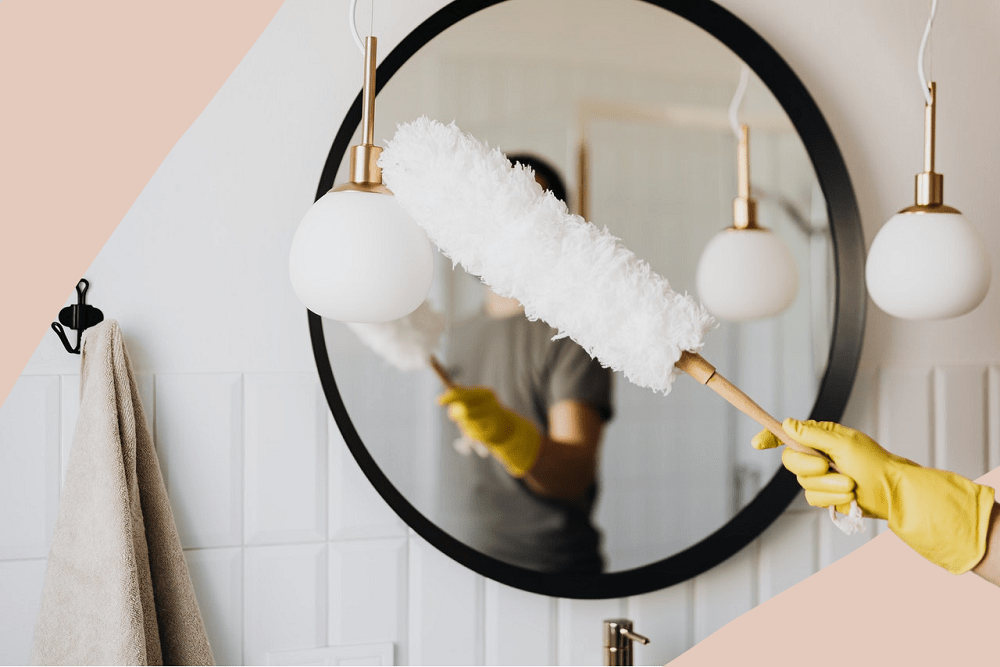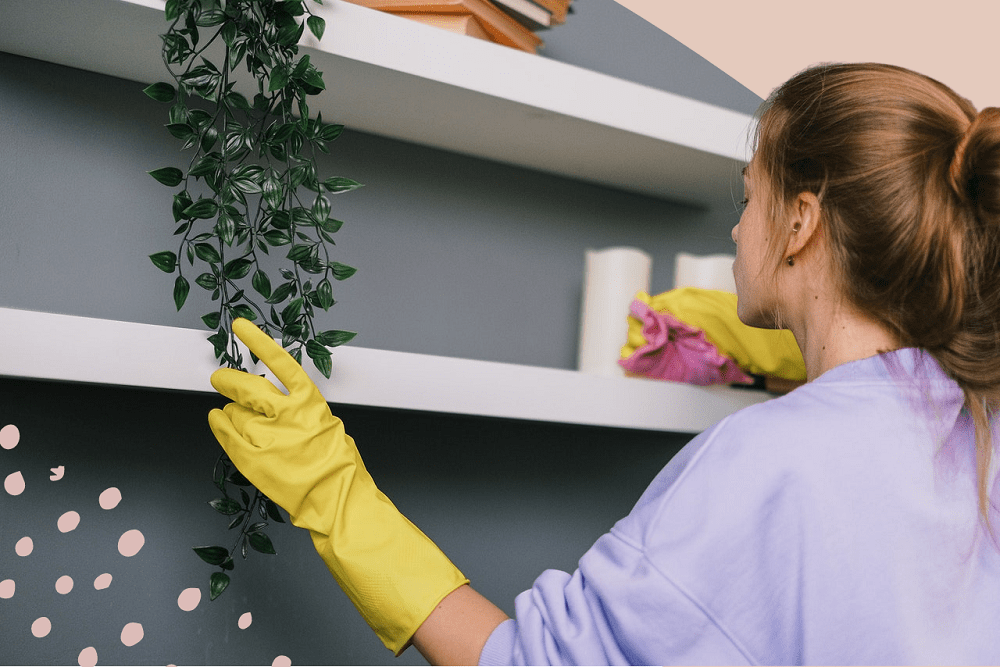Dust is an omnipresent companion in our homes, often seen as a harmless, albeit annoying, part of everyday life. However, the innocuous dust bunny under your bed might be more of a foe than a friend when it comes to your health, and needs managing to ensure it’s not a nuisance. Or worse…
With that in mind, here’s some simple, practical advice on how to minimise dust’s presence in your home.
The Potential Health Implications Of Household Dust
At first glance, dust may seem like nothing more than a collection of tiny particles that settle on surfaces. But it’s actually a complex mixture of dead skin cells, hair, pet dander, dust mites, bits of fabric, pollen, soil, and microscopic organisms. It can also contain harmful substances like lead, arsenic, and other heavy metals that are tracked in from outside or shed from household items.
Exposure to dust can, potentially, lead to a variety of health issues, particularly for those with allergies, asthma, or other respiratory conditions. Dust mites, for example, are a common allergen and can exacerbate symptoms in sensitive individuals. The fine particles can irritate the eyes, throat, and skin, and prolonged exposure to dust containing toxic substances can have more serious long-term effects.
Children, the elderly, and those with compromised immune systems are especially vulnerable to the effects of dust. As children play on the floor and often put their hands in their mouths, they can ingest or inhale dust particles, which may lead to health complications.

Keeping Dust At Bay: Strategies For A Healthier Home
Maintaining a dust-free home is a Sisyphean task, but there are effective ways to reduce its accumulation. Here are some top tips to help you keep household dust to a minimum:
Stick To A Regular Cleaning Routine
Regular dusting and vacuuming are the most effective ways to reduce dust accumulation. Use a damp cloth to capture dust rather than simply displacing it. When vacuuming, use a machine with a HEPA (High-Efficiency Particulate Air) filter to trap even the smallest particles.
Declutter Your Space
Clutter doesn’t just affect the aesthetics of your home; it also provides more surfaces for dust to settle on. “By keeping your home tidy and free of unnecessary items, you can reduce the number of dust-collecting spots”, comments Rony, Operation Manager at Topwasters, a house clearance company in London.
Upgrade Your Furnishings
Opt for easy-to-clean furniture with smooth surfaces, and avoid heavy drapes and fabric-heavy decorations that can trap dust. If you have carpets, consider replacing them with hardwood, laminate, or vinyl flooring, which are easier to keep dust-free.

Mind The Gaps
Seal cracks and crevices around windows and doors to prevent dust from entering. Use draught excluders and repair any damaged seals.
Read: 8 budget purchases that can boost your home’s energy efficiency and its value
Adjust Your Home Environment
Maintain a humidity level of around 40-50% to discourage dust mite populations. Use a dehumidifier if necessary, especially in damp areas like basements.
Purify The Air
Air purifiers with HEPA filters can capture airborne dust particles and other allergens, improving the air quality in your home.
Tend To Your Textiles
Wash bedding, curtains, and other fabrics regularly at high temperatures to kill dust mites and remove accumulated dust.
Be Mindful Of What You Bring Indoors
Leave shoes at the door to avoid tracking in dirt and dust from outside. Consider using doormats both inside and outside the entrance to your home.

Keep Your Pets Groomed
Regularly grooming your pets can reduce the amount of hair and dander they shed around the house.
Consider Your Landscaping
If you suffer from pollen allergies, choose plants for your garden that are less likely to aggravate your symptoms. Keep windows closed on high pollen days to prevent it from entering your home.
Opt For Natural Cleaning Products
Many conventional cleaning products can actually contribute to indoor air pollution. Natural, non-toxic cleaning solutions can be just as effective and are better for your health and the environment.
Improve Ventilation
Good ventilation can help reduce dust by circulating air and reducing the build-up of dust-laden air in your home. Make sure to use exhaust fans in bathrooms and kitchens and open windows when weather permits to allow fresh air to circulate.

Don’t Worry About Dust Too Much
While it’s important to be aware of the potential health risks associated with household dust, it’s also crucial not to become overly anxious about it. A certain amount of dust is a normal part of a lived-in home, and trying to maintain a completely dust-free environment can be both impractical and stressful.
Remember that the human body is resilient and can handle small amounts of dust without any problems. It’s all about balance—taking reasonable steps to reduce dust without letting the pursuit of cleanliness overwhelm you.
The Bottom Line
While it’s impossible to create a completely dust-free environment, taking proactive steps to minimise dust can significantly improve the air quality in your home and safeguard your health. By incorporating these strategies into your routine, you can create a cleaner, healthier living space for you and your family.
Remember, a little effort goes a long way in the battle against household dust. So, don your cleaning gloves, arm yourself with knowledge, and declare war on those pesky particles. Your health will thank you for it.





